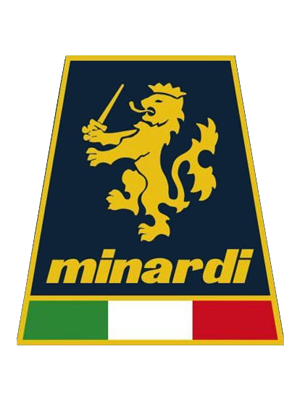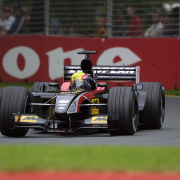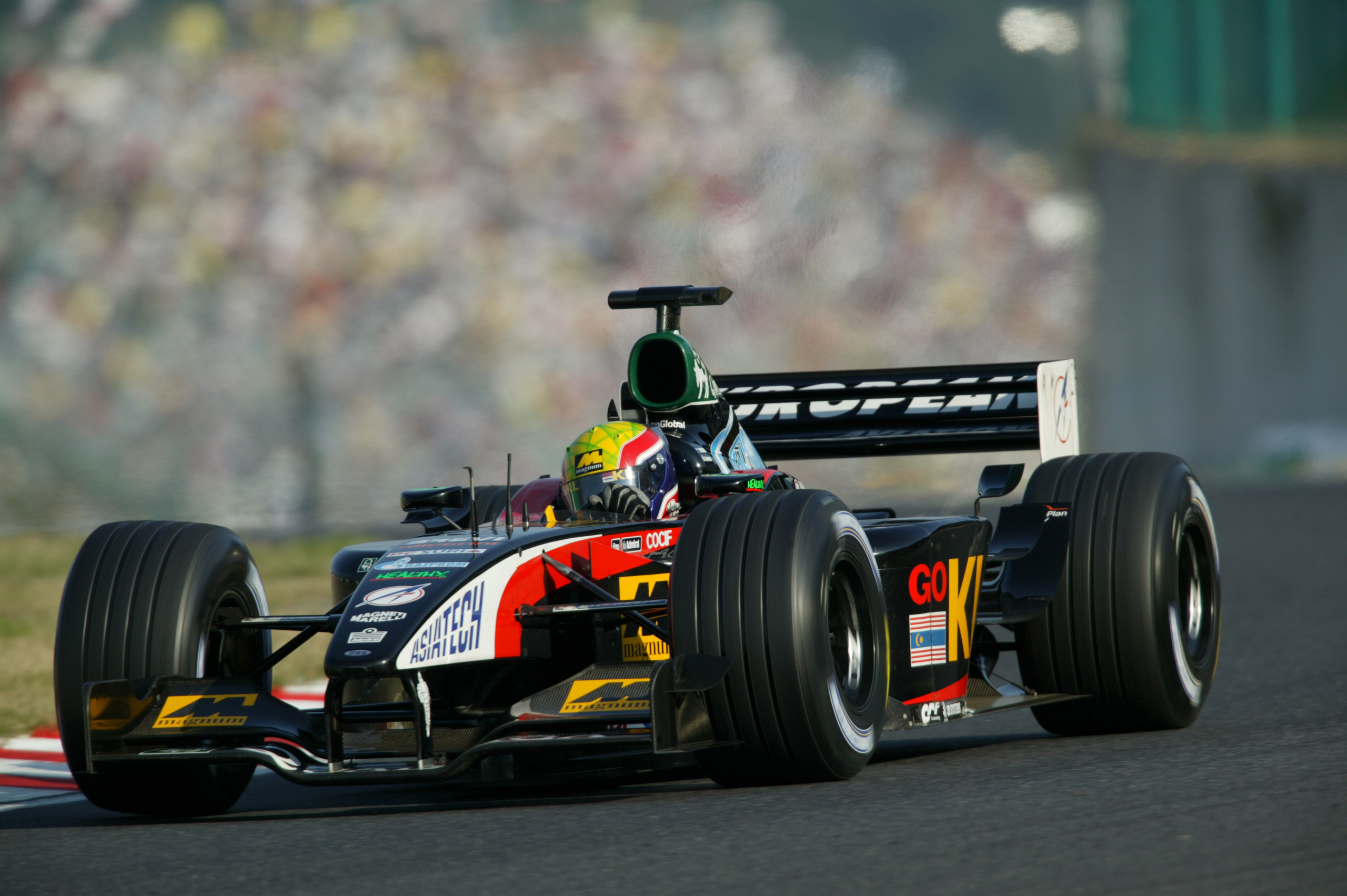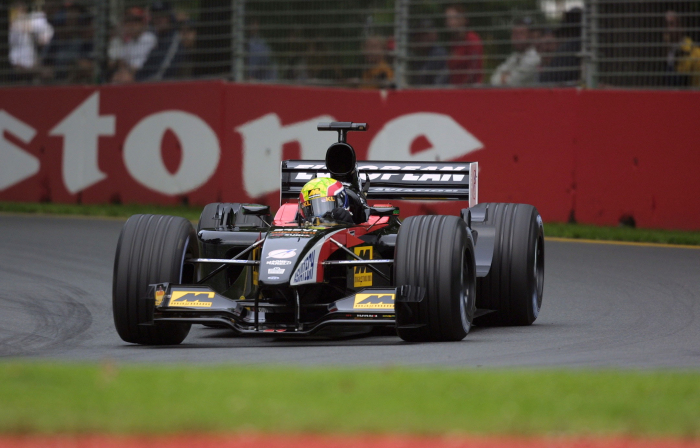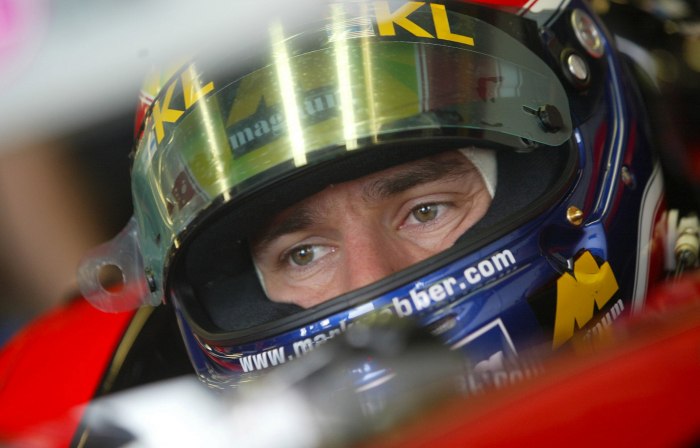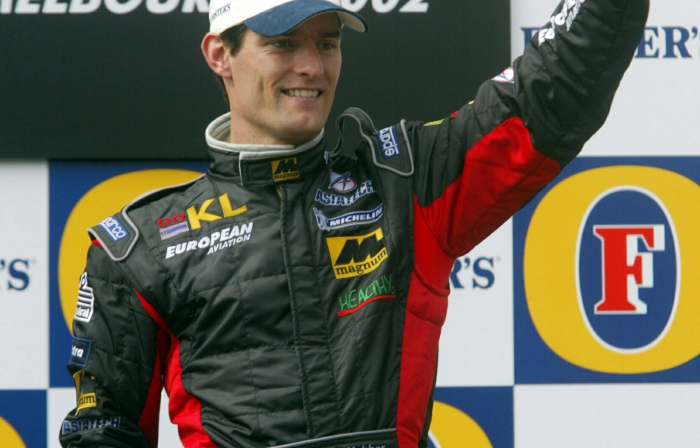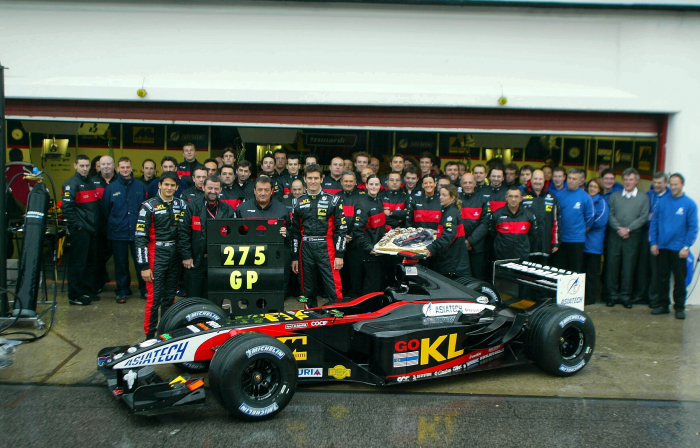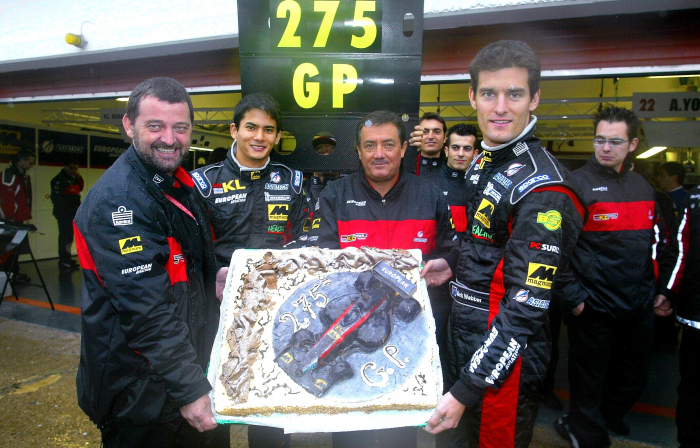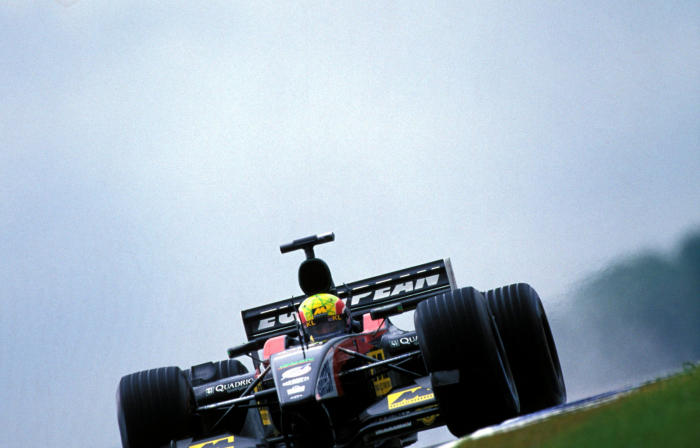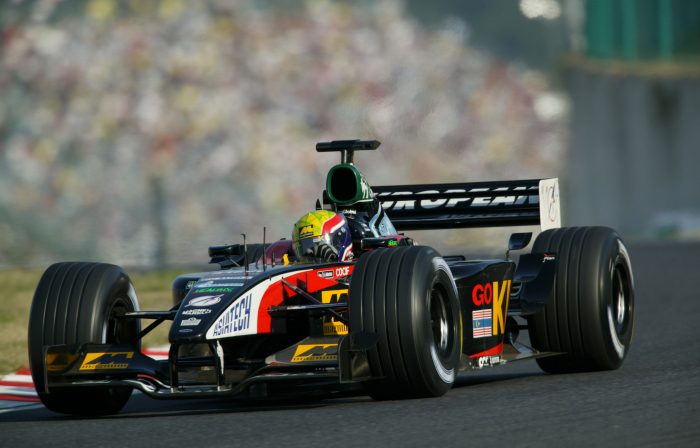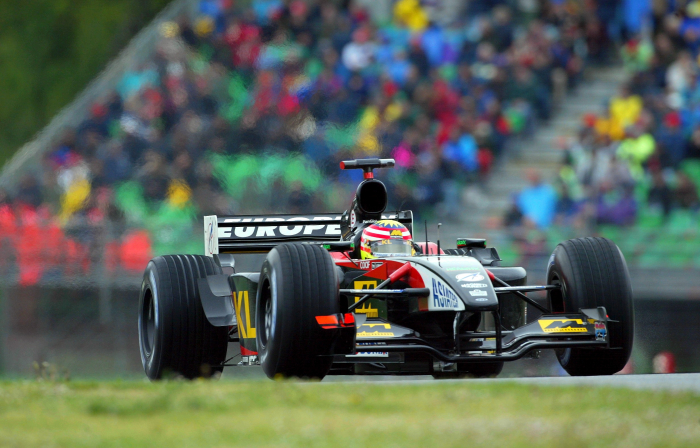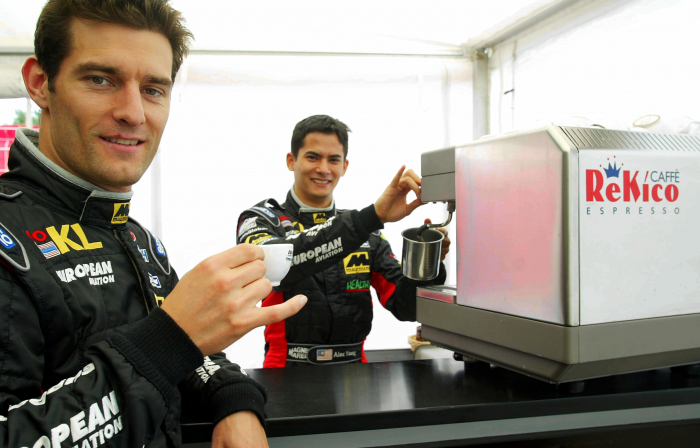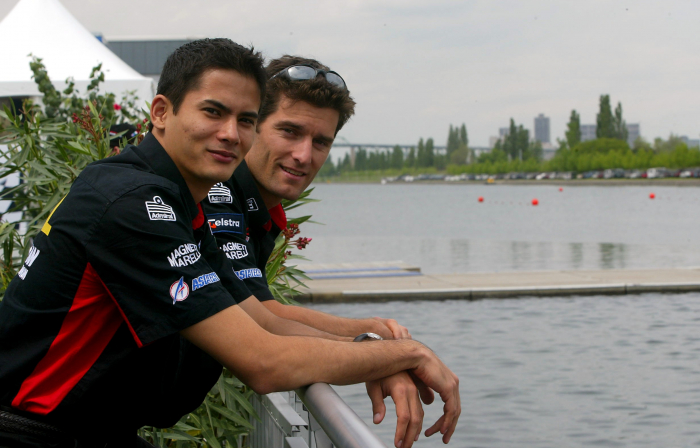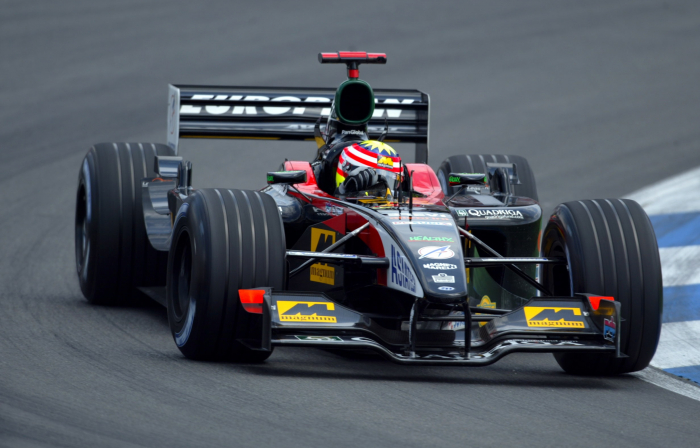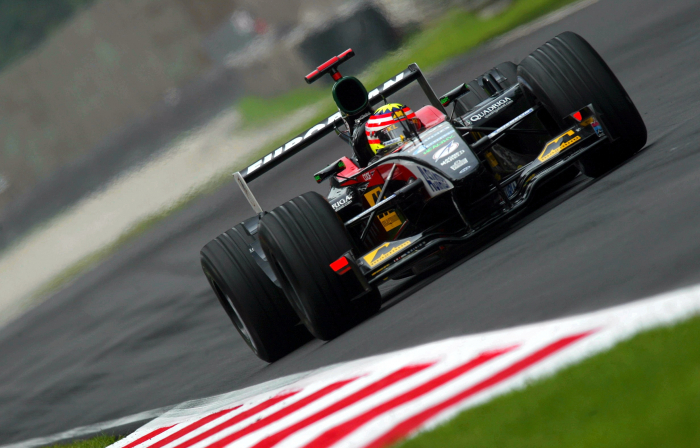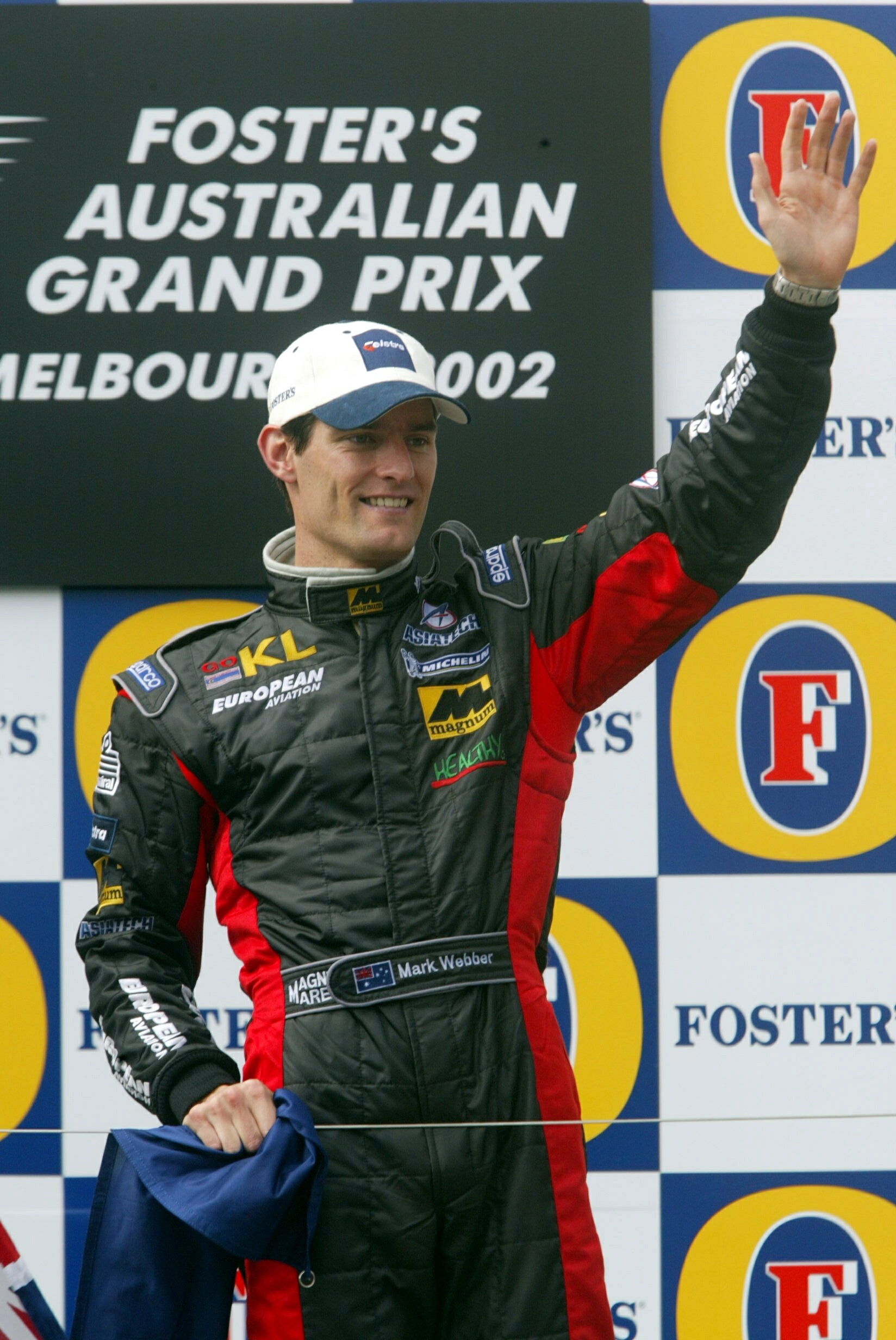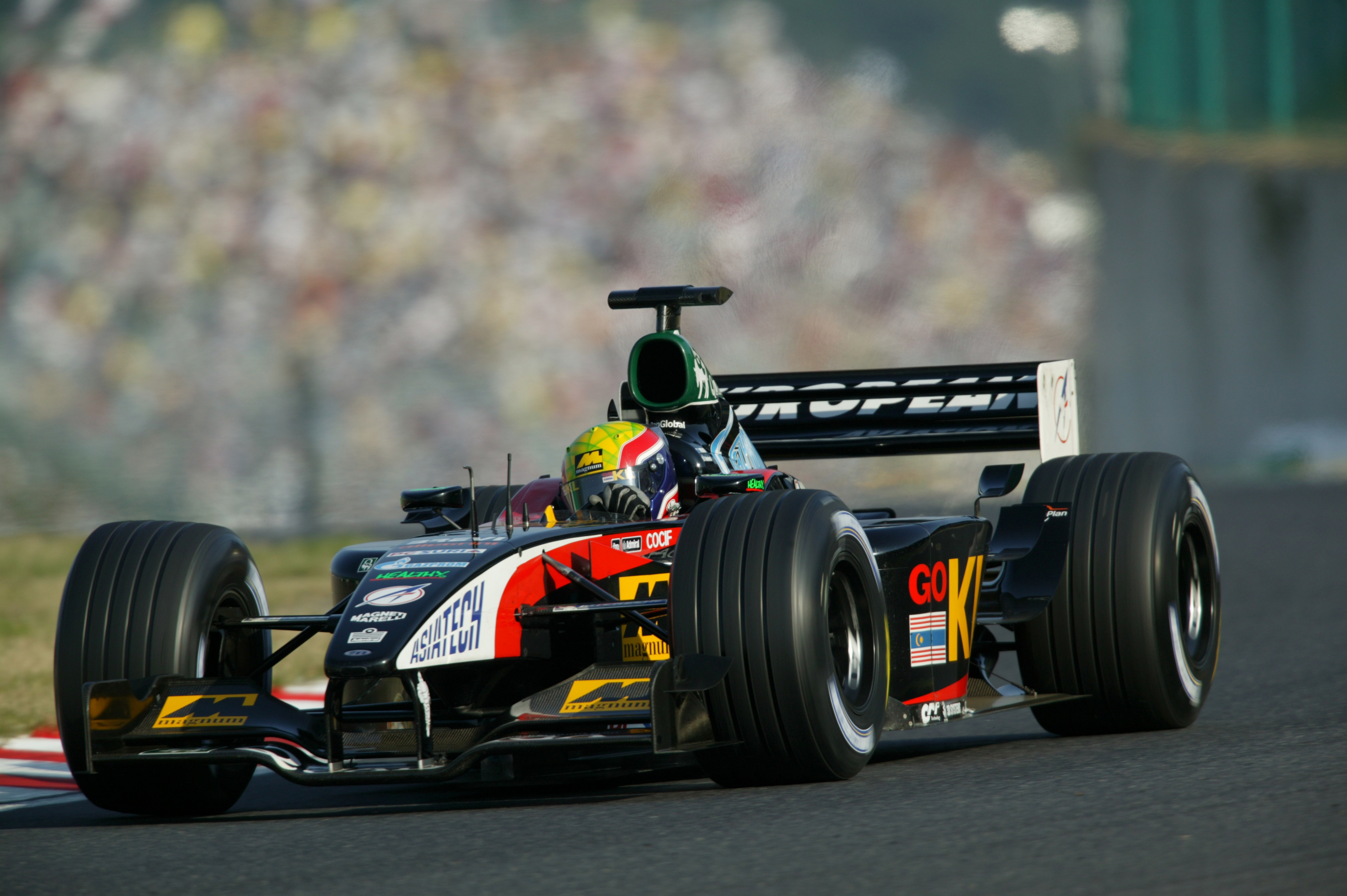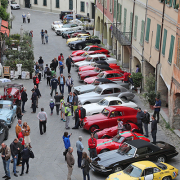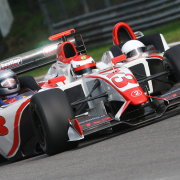MINARDI PS02 | MARK’S DEBUT WELCOMED ON THE PODIUM
The PS02 was very different from its predecessor. It was the first racing car to bear the signature of Gabriele Tredozi and the main difference was made up of the nose cone turned up high and the subsequent abandonment of the tie rod suspension in favour of the classic strut system.
Compared to the PS01 the wheel base grew by 74 mm to allow the placement of the B version of the titanium gearbox but especially in function of the greater capacity of the fuel tank which had been increased by 20 litres.
The lengthening of the wheelbase was also necessary for moving the front axle forward in order to further remove from the sides the turbulence coming from the front tyres.
The weight distribution was moved forward with a concentration of 45% on the front axle and the possibility of managing the ballast of 50 kg.
The arrangement of the radiators was somewhat different with the abandonment of the lying position in favour of the more traditional symmetrical groups, in other words, with the radiators for water and oil on both sides.
The PS02 immediately showed it was a more efficient machine in aerodynamic terms, even of the development in the wind tunnel was rather limited during the season with the introduction of only a new diffuser in Austria and the new bulkheads for the front wing, this too modified during the season.
Compared to the PS01 which had showed poor reliability in the transmission group the PS02 proved to be a decidedly reliable car. Powered by the less powerful but reliable Asiatech (ex Peugeot) engine the PS02 used two different systems of electronic switchboards: one for the chassis produced by Magneti Marelli and the one for the engine produced by TAG.
With the departure of Fernando Alonso a new debutant arrived in Faenza, the Australian Mark Webber who was joined by the Malaysian Alex Yoong (who brought a dowry of a number of million dollars to the team) who had been the Spaniard’s team mate from the 2001 Italian Grand Prix.
The season’s most exciting moment precisely on the occasion of the opening race of the World Championship in Melbourne on March 9 (another important date in the history of the Minardi Team). On his home track and his absolute debut in F1 Mark Webber took an extraordinary 5th place which made the fans f the whole circuit explode with joy.
At the start both Minardis manage to pass the fearful crash unscathed. From that moment the racing cars from Faenza continued to stay within the points zone with Mark achieving the first points of his career.
Michael Schumacher often remembered that particular GP that saw him win at the wheel of the Ferrari for one detail: he was astounded by having few people beside him at the moment of popping the champagne bottle, they had all gone to celebrate the Minardi and its fifth place which also joined the German champion. It was a memorable race further reinforced by Yoong’s 7th place.
During the rest of the season the PS02 showed good potential in highly driven circuits such as Monte Carlo. On April 14 at Imola’s Enzo and Dino Ferrari Circuit on the occasion of the San Marino Grand Prix the team from Faenza crossed the line of 275 GPs.
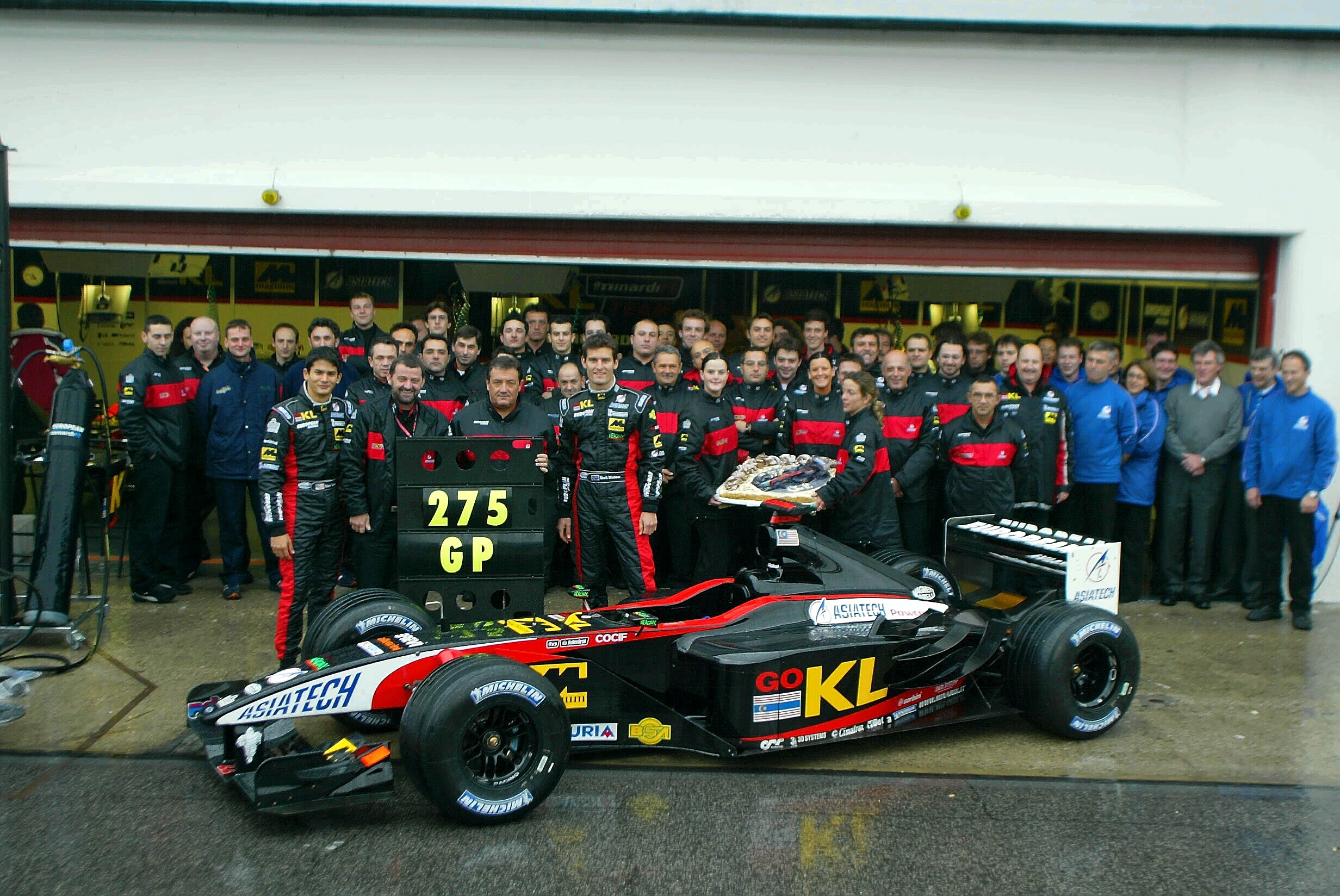
The Minardi team celebrate their 275th Grand Prix start. – San Marino Grand Prix, Imola, Italy, 11 April 2002.
At the French Gp on July 21 Mark Webber took 8th place (Yoong 10th) and 10th place in Japan in the final round of the season. On the occasion of the Hungarian and Belgian Grands Prix the Malaysian’s steering when was entrusted to Anthony Davidson.
Thanks to the points scored in Australia the Minardi Team ended the 2002 season in 9th place which gave them access to the very important TV funds.
In that same season the team decided to build a Minardi two-seater by modifying the chassis of the Tyrrrell 026 to approach potential sponsors. Michael Schumacher himself wanted to drive it to entertain his wife and children.
On October 27 of that year the second “Minardi Day” took place, the first was at the Imola’s Enzo and Dino Ferrari Circuit that since 2016 has become the home of the Historic Minardi Day, and a good four of these cars were present, driven by Alex Young, Matteo Bobbi, Giorgio Pantano and by Paul Stoddart.
